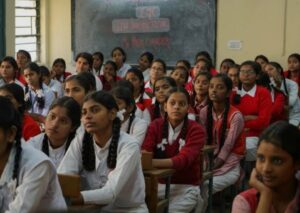Maharashtra’s 3 Language Policy Controversy
Recently many states opposed 3 Languages policy sighting Hindi imposition on their vernacular/ local mother toung. In this article we will evaluate controversy around 3 Languages policy.
What is 3 Language Policy ?
- The 3 language formula is an education framework that was first introduced in the National Education Policy (NEP) of 1968.
- It suggested states to do the teaching of Hindi in non-Hindi speaking states, alongside English and a local regional language.
- Central government of India’s New education policy of 2020 also mentioned about 3 Languages for education purpose.
What are 3 Languages in this policy?
- English ( For employment purpose)
- Hindi (As connecting language of India between various states)
- Regional language of that state ( Tamil language in Tamilnadu, Marathi language in Maharashtra and so on .)
Historical Context and Policy Birdview of the 3 Language Formula
- Constitutional Vision for Linguistic Pluralism: Articles 344 and 351 of the indian Constitution envision the progressive use of Hindi for official purposes but explicitly mandate that it must evolve by assimilating the forms, styles, and vocabulary of other Indian languages listed in the Eighth Schedule.
- Article 351 emphasizes enriching Hindi by drawing on Sanskrit and Hindustani, aiming for Hindi to be a medium of India’s composite culture, not a hegemonic language.
- First Official Language Commission and the Munshi-Ayyangar Formula (1950s) (K.M. Munshi and N. Gopalaswamy Ayyangar)
- After independence, strong resistance from South Indian states—particularly Tamil Nadu—to the exclusive promotion of Hindi prompted the Munshi-Ayyangar compromise: Hindi as the official language, with English retained as an associate language.
- The Official Language Act, 1963 (amended 1967) formalized the continued use of English alongside Hindi indefinitely for official purposes.
- Kothari Commission (1964–66): The Birth of the 3 Language Formula
- The Education Commission (Kothari Commission) was the first to formally articulate the 3 Language Formula.
- Objectives:
- Promote national integration and regional language proficiency.
- Promote use of Hindi or another Indian language and English as a global language for career point of view.
- Policy framework in the National Education policy of 1968: Based on the Kothari Commission, the 1968 NPE formally adopted the formula.
- Aimed to:
- Reduce Hindi vs. non-Hindi linguistic tensions.
- Make Sanskrit available as an additional language.
- Modifications in 1986 and 1992: The 1986 NPE and its 1992 revision reiterated the formula but acknowledged:
- Implementation gaps, especially in Hindi-speaking states.
- States like Tamil Nadu continued with a two-language policy (Tamil + English), rejecting Hindi due to popular resistance.
- NEP 2020: New Flexibility with Old Foundations
- NEP 2020 retains the spirit of the three-language formula but removes rigidity:
- States are free to choose any two Indian languages and one foreign language.
- No language will be imposed, reaffirming federal and cultural sensitivities .
- Encourages learning in mother tongue/home language till at least Grade 5, optionally till Grade 8.
Importance of using 3 language policy in education
- Promotes National Integration While Preserving Diversity: It ensures students in Hindi-speaking and non-Hindi-speaking states develop mutual understanding of other Indian languages, fostering intercultural harmony.
- The Kothari Commission (1964–66) recommended the 3 Language Formula to balance national unity with regional linguistic autonomy.
- Strengthens Federalism Through Linguistic Inclusion: Eighth Schedule of the Constitution enlists 22 languages to be promoted equitably; implementation of the formula operationalises this constitutional ideal.
- Article 351 urges Hindi promotion without displacing other languages—thus the formula allows states to choose second and third languages, respecting federal structure.
- Educational Equity Across Regions: Helps level the playing field for students from both Hindi and non-Hindi states in national competitive exams and cultural exchange.
- NEP 2020 advocates that students across India should study three languages, at least two of which are Indian. This seeks to eliminate regional imbalances in language access.
- Preservation and Enrichment of Indian Languages: The formula creates a functional demand for minority and classical languages, thereby preventing language death and aiding linguistic research.
- Inclusion of Sanskrit or Tamil as third languages can sustain classical learning and literature while increasing youth engagement.
- Bridges Rural–Urban and Government–People Language Gaps: Hindi and English dominate official communication, while many Indians speak regional tongues. A multilingual education allows better access to state services and literacy in official communication.
- Helps implement the Official Language Act (1963), which ensures both Hindi and English are used for Union-level communication.
- Enhances Employment and Mobility: Language skills improve access to public sector jobs, cultural industries, and interstate mobility.
- NEP 2020 emphasizes multilingual proficiency as a 21st-century skill necessary for cognitive development and national/global engagement .
- A Tamil student fluent in Hindi and English can work in Maharashtra, Delhi, or abroad without linguistic barriers—boosting national labor mobility.
- Mitigates Linguistic Hegemony: Formalizing a formula with equal respect for all Scheduled Languages prevents any one language (e.g., Hindi) from becoming a default imposition.
- In politically sensitive states (like Maharashtra), it guards against the perception of Hindi cultural dominance, preserving democratic consensus.
Language Diversity in India
Indicator Data / Fact Total number of languages (Census 2011) 121 languages spoken by 10,000+ people each Total mother tongues recorded 1,369 distinct mother tongues identified Most Spoken Language Hindi (43.63%), followed by Bengali (8.03%), Marathi (6.86%), Telugu (6.70%) Trilingualism trend (Urban India) Census 2011: 7% of Indians are trilingual; 26% bilingual
Issues in implemention of 3 Language Policy
- Resistance in Non-Hindi States: Tamil Nadu has historically opposed Hindi imposition, tracing back to the Anti-Hindi Agitations (1937, 1965). The state follows a two-language policy (Tamil and English) instead.
- The 2025 Maharashtra decision to make Hindi the default second language till Class 5 sparked political backlash, especially from regional parties.
- North-South Divide: In North India, Hindi is the predominant language, but in South India, regional languages like Tamil, Telugu, Malayalam and Kannada hold stronger ground.
- The South perceives the policy as favoring Hindi-speakers, while many in the North do not feel the need to learn a South Indian language.
- Lack of Implementation Uniformity: The formula is implemented unevenly across states.
- Tamil Nadu has long rejected the formula in favor of a two-language policy (Tamil + English). Meanwhile, Hindi-speaking states rarely teach a South Indian language.
- Limited Language Choices in Practice: Though NEP 2020 allows multiple Indian language options, schools cannot realistically offer 15+ languages.
- Small demand for regional languages (e.g., Tamil in Bihar) makes real choice infeasible.
- Students are forced to select Hindi or English, defeating the formula’s pluralist identity.
- Linguistic Inequality and Language Hierarchy: Hindi and English enjoy dominance in governance, education, and employment, sidelining Scheduled and tribal languages.
- Article 351 speaks of enriching Hindi with all Scheduled Languages, but implementation has strengthened Hindi’s hegemony, not diversity.
- Undermines Federal and Cultural Autonomy: Central directives on language are seen as violating state powers over education and culture.
- Maharashtra’s retreat from its Hindi push reflects how linguistic decisions must be stakeholder-driven.
Multilingual Education Policies in Other Countries
Canada: Bilingualism with Federal Support
- Official Bilingualism (English and French) under the Official Languages Act (1969).
- Education Model: Provinces provide French Immersion Programs even in English-dominated areas.
Switzerland: Pluralist Federal Language Model
- Four official languages — German, French, Italian, Romansh.
- Language of instruction varies by canton; students must learn at least one other national language.
South Africa: Multilingualism as Post-Apartheid Justice
- Policy: 11 official languages under 1996 Constitution.
- Learners have the right to be taught in their home language where feasible.
Singapore: “Mother Tongue” + English Bilingual Model
- English as the main medium + mandatory mother tongue (Chinese, Malay, or Tamil).
- Objective: English ensures global relevance; mother tongue preserves cultural identity
Steps for Strengthening the 3 Language Policy
- consultation with states before framing policy : language-related policy decisions should followed by consultation with various state governments and local stakeholders including common people.
- Flexible Language Choice Within Regional Context: Encourage states to select any two Indian languages suited to their local demographic (e.g., tribal areas can include Santali or Gondi).
- This allows the policy to reflect linguistic realities, avoiding default reliance on Hindi.
- Language Infrastructure Support from Centre: The Union government must fund teacher recruitment and textbook development for all Scheduled and major tribal languages.
- Achieve NEP 2020’s 6% of GDP education target, especially for multilingual pedagogy.
- Prioritize Mother-Tongue or Regional Language in Early Education: As per NEP 2020, ensure mother tongue or regional language is the medium of instruction at least till Grade 5.
- Establish National Language Diversity Index and Monitoring: Track the actual use of different Indian languages in education via a Language Diversity Index (LDI) reported annually.
- Similar indices exist for biodiversity and gender—language can follow suit.
- Mass Awareness Campaign on Linguistic Equality: Launch campaigns promoting equal respect for all Indian languages, backed by cultural bodies like Sahitya Akademi.
- Reduces social bias towards English and Hindi and affirms the constitutional vision of India’s pluralist linguistic identity.
- Promoting Multilingualism Naturally: Census data of 2011 shows that 26% of Indians are bilingual, and 7% are trilingual, with higher rates in urban areas.
- Rapid urbanisation and labor migration are likely to increase multilingualism organically, reducing the need for compulsory language policies.
- Global Competitiveness and career : English language has now become a key driver of India’s success in global service industries.
- While learning additional Indian languages is desirable, it should not come at the cost of English or regional language proficiency.
- Reciprocal Learning: Encourage Hindi-speaking states to learn Southern languages (e.g., Tamil, malayalam) for mutual respect.
- Promote Sanskrit as a cultural connecting language.
Way ahead for 3 Languages policy
The 3 Language Policy, is based in constitutional and educational frameworks, seeks to enhance national integration by growing Nationalism alongside preserving linguistic diversity of India. However, its succes depends upon addressing regional sensitivities and promoting equitable language choices through federal collaboration.


One thought on “3 Language policy controversy in india”